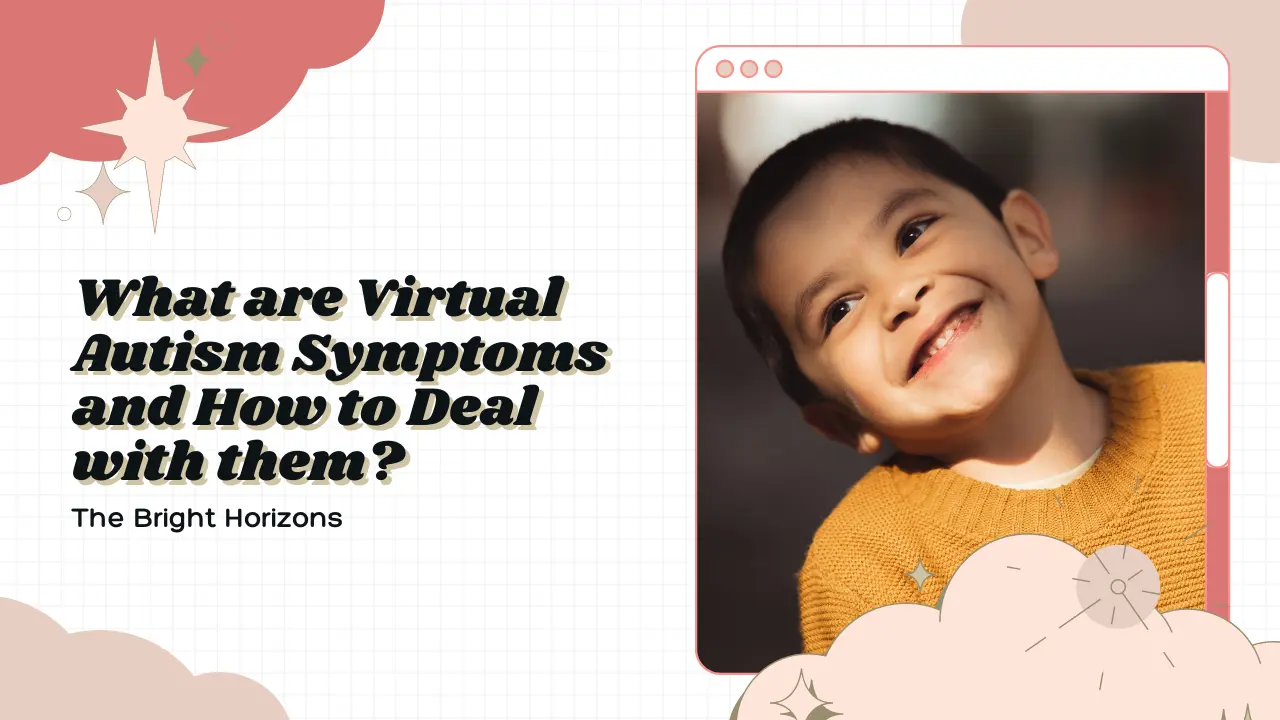Screens are everywhere in our lives now. People use them so much that they might forget they can be bad for them, especially when kids spend a lot of time staring at them – even during meals or when they are in the bathroom. This heavy screen time can affect how their brains develop, making them act like they have autism. This excessive screen time can affect how their brains grow, causing behaviours similar to autism spectrum disorder (ASD). So, is “virtual autism” just like autism spectrum disorder? To answer that, we need to understand what virtual autism really means.
What is Virtual Autism?
Virtual autism describes a situation where individuals, especially children, show symptoms resembling those of autism because of spending too much time with screens and digital gadgets. It is crucial to differentiate virtual autism from ASD since the causes and strategies for dealing with these conditions may vary greatly.
What are Virtual Autism Symptoms?
- One common sign of virtual autism in toddlers is being overly active and restless, more than what’s usual for their age.
- They might have trouble focusing on tasks and may prefer virtual activities over real-life ones, which makes it hard for them to connect with others. This lack of real social interaction can also affect their speech and language development, making it tough for them to express themselves.
- Toddlers with virtual autism might get easily irritated or frustrated, especially when transitioning from virtual to real-life situations. This can lead to emotional and behavioural challenges, making it tough for them to adapt.
- They may also find it hard to stay focused on one thing for long, which affects their learning.
- Moreover, toddlers with virtual autism may experience significant changes in emotions and mood. These unpredictable changes in behaviour can increase challenges for parents and caregivers in responding effectively and ensuring the child’s safety and well-being.
You can call us or WhatsApp for More Details @ our Customer Care Number +91-9800-9900-88
Treatment Strategies for Virtual Autism: Addressing and Conquering Obstacles
Dealing with virtual autism requires a comprehensive strategy. This may encompass:
- Behavioural techniques
- Occupational therapy sessions
- Autism Speech therapy sessions
- Social skills development
We at Bright Horizons offer a personalized treatment plan to the individual’s requirements to enhance the chances of success.
How to Deal with Virtual Autism?
- To deal with virtual autism, we suggest to spend less time on screens.
- By telling them they’re doing great, recognizing their accomplishments, and highlighting what they’re good at, we can make them feel good about themselves and encourage them to do things other than using screens.
- We get them involved in creative activities, physical games, hobbies, and socializing to help improve their health and decrease their dependence on screens.
Virtual Autism Recovery Time
The time it takes to recover from virtual autism varies based on factors like how severe the symptoms are, how well the child responds to treatments, and how consistently the recommended strategies are followed. You can reach us and we can give you a better idea of how long recovery might take.
Conclusion
Screens have become essential in our lives, and completely eliminating them is nearly impossible. Nevertheless, it is crucial to be mindful of how much time your child spends in front of screens. If your child is getting affected by virtual autism, you can reach Bright Horizons today.
You can call us or WhatsApp for More Details @ our Customer Care Number +91-9800-9900-88
Other Useful links:-

